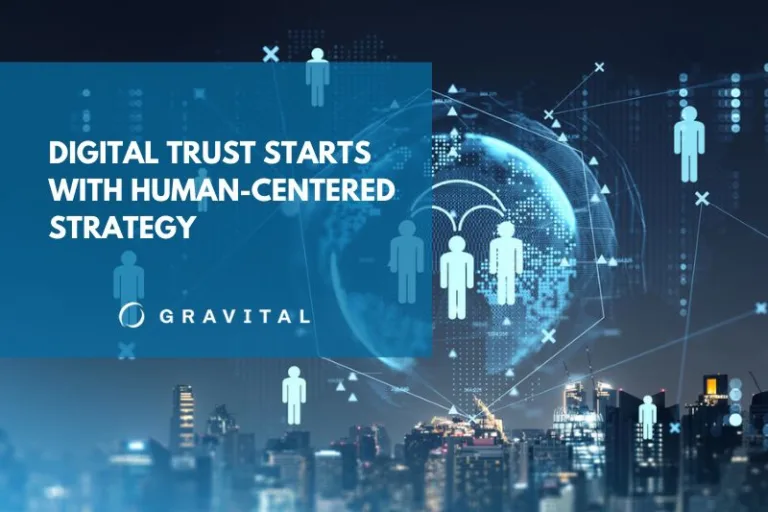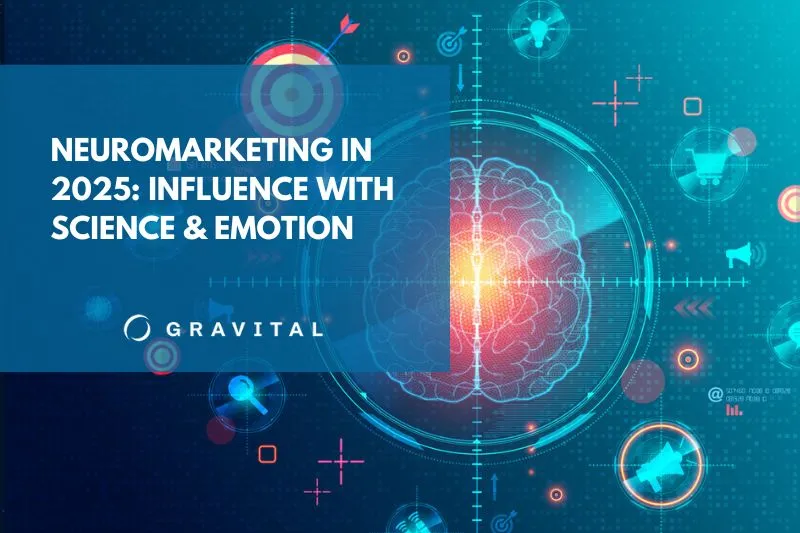In the insurance industry, trust isn’t a nice-to-have—it’s the foundation. But earning it? That’s a challenge. With increasing competition, skeptical audiences, and a product that’s often misunderstood or viewed with reluctance, insurance providers face a unique marketing dilemma: how to be human in a highly automated world.
At Gravital Agency, we believe digital marketing shouldn’t just be about visibility—it should build genuine, lasting relationships. That’s where we come in. By creating content strategies rooted in empathy, transparency, and real value, we help insurance providers position themselves not just as service providers—but as partners in protection.
The Trust Challenge in Insurance Marketing
Insurance products are inherently challenging to market. They’re intangible, complex, and often associated with negative events. Most consumers don’t wake up excited to purchase insurance—they do so out of necessity, obligation, or concern.
Research show that less than 25% people trust their insurance provider, placing the industry among the least trusted sectors—below energy companies, banks, and telecommunications. This trust deficit stems from several factors:
- Complexity: Consumers struggle to understand basic insurance terminology like “deductible,” “copayment,” and “coinsurance”
- Information asymmetry: Insurance providers inherently know more about their products than consumers
- Negative associations: Insurance is linked to unpleasant scenarios like accidents, illness, or property damage
- Payment without visible benefit: Customers pay premiums regularly but may never file a claim
Creating Value-Based Content That Builds Trust
Content marketing serves as the cornerstone of trust-building for insurance providers. By offering valuable information that addresses real customer concerns, insurers position themselves as helpful advisors rather than just service providers.
READ ALSO: Trust, the Cornerstone of Agency-Client Relationships
Educational Content That Empowers
Insurance terminology can be overwhelming for the average consumer. Creating clear, accessible content that explains complex concepts helps bridge this knowledge gap and demonstrates a commitment to transparency. Consider developing:
- Straightforward explainer articles about coverage options
- Visual infographics illustrating how claims processes work
- Comparison guides that help consumers understand policy differences
- Calculators that estimate appropriate coverage levels based on individual needs
When customers feel informed, they’re more likely to trust the provider who educated them.
Addressing Real Customer Concerns
The most effective insurance content directly addresses the questions and concerns that keep customers up at night:
- Will my claim be paid if something happens?
- Am I paying too much for my coverage?
- What exclusions might affect me later?
- How quickly will my claim be processed?
By proactively addressing these concerns through content that’s honest about both the benefits and limitations of coverage, insurers demonstrate integrity and build credibility.
Storytelling That Resonates
Abstract policy details rarely inspire emotional connection, but stories about real people in real situations do. Content that showcases how insurance provided security and support during difficult times helps prospects envision the tangible value of seemingly abstract policies.
Case studies and testimonials from clients who received prompt, fair claim settlements during challenging circumstances offer powerful trust signals. These narratives transform insurance from an intangible concept into a concrete support system.


Digital Channels for Insurance Trust-Building
While content forms the foundation of trust, distribution channels determine whether that content reaches its intended audience effectively.
Strategic Social Media Engagement
Social platforms offer insurance providers unique opportunities to humanize their brand and engage directly with customers. However, generic corporate messaging often falls flat. Instead, focus on:
- Sharing authentic stories from clients and employees
- Creating educational videos that simplify complex topics
- Responding promptly and empathetically to questions and concerns
- Showcasing community involvement and corporate social responsibility efforts
These approaches transform social media from a broadcast channel into a relationship-building platform.
Email Marketing That Provides Ongoing Value
Email communication remains highly effective in insurance marketing when it delivers relevant, valuable content rather than simply promoting products. Consider:
- Personalized policy anniversary messages that acknowledge the relationship
- Seasonal safety tips relevant to the customer’s policy type
- Important industry updates that might affect coverage decisions
- Claim process guidance before it’s needed
By providing consistent value through email, insurers remain top-of-mind while reinforcing their role as helpful advisors.
YOU MIGHT LIKE: Ensure the Future: 10 Vital Digital Marketing Strategies for Insurance Brands
Website Experience Focused on Transparency
Your website often forms the first impression for potential customers. Beyond aesthetic appeal, focus on creating an experience that emphasizes transparency and accessibility:
- Clear, jargon-free explanations of policy options
- Straightforward pricing information without hidden fees
- Accessible customer service contact options
- User-friendly claims reporting processes
- Comprehensive FAQ sections addressing common concerns
These elements signal trustworthiness to visitors evaluating potential providers.
The Human Element: Empathy in Digital Insurance Marketing
Technology enables efficient communication, but human connection drives trust. The most effective insurance marketing strategies balance technical capabilities with genuine empathy.
Conversational, Human Tone
Insurance communications often default to formal, legal language that creates distance between provider and customer. Instead, adopt a warm, conversational tone that feels like advice from a knowledgeable friend rather than corporate jargon.
This approach doesn’t mean sacrificing professionalism—it means communicating complex information in accessible, relatable terms that acknowledge the human on the receiving end.
Personalization Beyond Basic Demographics
True personalization extends beyond addressing customers by name. It involves understanding their specific situation and tailoring communications accordingly:
- Life stage-specific content for different insurance needs
- Location-based information regarding local regulations or risks
- Policy-specific guidance based on their existing coverage
- Anniversary-based communications acknowledging the relationship
These personalized touches demonstrate that you see customers as individuals, not policy numbers.
Responsive Customer Service Across Digital Channels
In insurance, questions rarely arise during convenient business hours. Digital channels offer opportunities to provide support when customers need it most:
- Chatbots for addressing simple questions immediately
- Social media monitoring for prompt response to inquiries
- Knowledge bases with searchable, comprehensive information
- Clear escalation paths for complex issues requiring human intervention
Prompt, helpful responses to customer questions reinforce the message that your company values their concerns.


Building Trust Through Honesty and Transparency
Perhaps the most fundamental element of trust-building in insurance marketing is maintaining absolute honesty about what policies do—and don’t—cover. While this might seem counterintuitive from a sales perspective, clear communication about limitations actually builds credibility.
Transparent Policy Information
Trust begins with transparent information about policy details:
- Clear explanation of coverage limits and exclusions
- Straightforward pricing information without hidden fees
- Honest comparison of different coverage options
- Upfront disclosure of potential coverage gaps
This transparency might occasionally cost a sale in the short term, but it builds lasting trust that drives long-term business growth.
Candid Claims Process Education
The claims process represents the moment of truth in the insurance relationship. Educational content that candidly explains how claims work—including documentation requirements, timeline expectations, and potential challenges—prepares customers appropriately and reduces friction during already stressful situations.
Honest Competitor Comparisons
Insurance providers often hesitate to acknowledge competitors, but thoughtful, factual comparisons can actually build credibility. Content that objectively compares different coverage options—even acknowledging when a competitor might better serve specific needs—demonstrates integrity that customers remember when making future decisions.
Measuring Trust-Building Success
Unlike transactional marketing metrics, trust-building success requires examining indicators beyond immediate conversions:
- Customer retention rates
- Referral volumes
- Social sentiment analysis
- Review quality and quantity
- Customer lifetime value
- Post-claim satisfaction scores
- Brand perception studies
These metrics provide a more complete picture of trust development over time.
Conclusion: The Future of Insurance Marketing Is Trust-Centered
As digital channels proliferate and consumer expectations evolve, insurance providers face a critical choice: continue traditional product-focused marketing or embrace a trust-centered approach that acknowledges customer concerns and provides genuine value.
At Gravital Agency, we’ve consistently found that insurance providers who prioritize trust-building through empathetic, honest, and valuable digital marketing outperform those focused solely on transaction-driven metrics. While building trust requires patience and consistent investment, it creates sustainable competitive advantage that transaction-focused competitors struggle to match.
In an industry where customer acquisition costs continue to rise and differentiation grows increasingly difficult, trust represents the most powerful—and most difficult to replicate—competitive advantage available to insurance providers.


